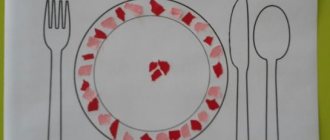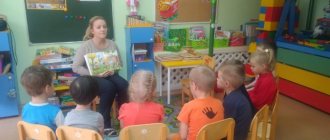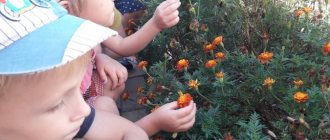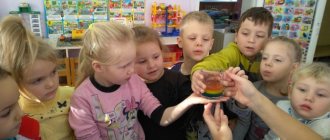Why does a child need a regime?
A child's daily routine is often based on their diet. Children get used to the fact that in the morning they get up, wash, have breakfast, study or walk, then have lunch, rest, and so on until bedtime. If this separation does not exist, then problems with food begin, because the child can snack on yogurt, a bun, or fruit at any time. As a result, he does not feel the hunger that is necessary for a full meal.
It is interesting that often in a family where dietary routines are not followed, parents do not worry about maintaining the daily routine in general. This leads to the fact that the time of waking up and falling asleep is always different, daytime sleep is an inconsistent phenomenon.
It has been proven that children are conservatives. They feel much calmer when they know what awaits them next, and react sharply to changes in planned actions.
The behavior of children who do not have a daily routine is characterized by frequent emotional outbursts in the form of hysterics for any reason; their level of aggressiveness and conflict may increase. It's difficult to get babies to sleep at night. If he wakes up late, he therefore does not rest during the day. The nervous system is overloaded, making it difficult for the child to readjust and sleep peacefully.
To prevent this from happening, it is better to stick to a certain schedule, even if not very strict.
Another weighty argument in favor of the regime
Sometimes parents are satisfied with such a life when the child is free to make his own decisions. However, problems begin when it comes time to go to preschool. Regular moments in kindergarten are strictly observed, and it will be very difficult for a child to adapt if he is not used to them.
Therefore, parents are strongly advised to familiarize themselves with the daily routine at the preschool educational institution and organize their day in advance as close as possible to the kindergarten schedule. This will make the child’s life easier while getting used to new conditions.
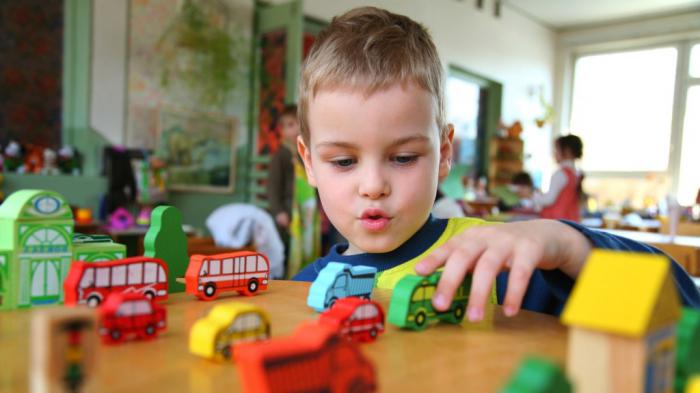
Life in kindergarten
Regular moments in a preschool educational institution (preschool educational institution, or kindergarten) are organized in such a way that children always have time for active games, activities and good rest. Almost all state kindergartens adhere to general rules when creating a daily schedule.
There is time for free activity for independent games, and some part of the walk is also allocated for them.
In the summer, educational activities in restricted areas change a little, because many excursions to museums, visits to theaters, zoos and other events outside the walls of the institution are planned for this period.
Meal times in kindergarten are almost the same everywhere. In some preschool educational institutions, children are offered fruits and juices as a second breakfast.
During quiet time, children sleep or lie quietly in bed. Daytime rest time varies from 2 to 3 hours.
Naturally, the routine moments in the junior group will be slightly different from the daily routine in the senior or preparatory group.
Joint activities in special moments in the middle group
Natalya Anikina
Joint activities in special moments in the middle group
Dear Colleagues!
I bring to your attention the joint activity of a teacher with children in special moments , in the educational field of “Labor”.
I hope this will help when planning educational work with children.
Educational field "Labor"
.
Middle group
Goals:
• Develop skills for independent and consistent performance of work actions.
• Achieve targeted actions and timely implementation;
• Accustom children to comply with work culture skills;
• Strengthen children's desire to engage in work on their own initiative.
• Develop a feeling of joy from the work done;
Develop the ability to achieve goals together and the desire to help each other.
September.
1 Week:
Teach children to maintain order on the veranda. Develop skills to perform labor actions one by one (sweeping part of the veranda one by one)
. Watch the work of a janitor.
Week 2:
Continue to teach children how to care for a plant in a corner of nature. Watch the teacher as he waters, loosens the soil, wipes the pot, and washes the tray. Develop a duty schedule in a corner of nature.
Week 3:
Monitor table manners. Conduct a conversation on etiquette, show the rules for using cutlery. Strengthen your ability to use a napkin. Foster table manners
Week 4:
Continue to teach children how to put on their own shoes and help others. Develop hand motor skills. Encourage the desire to help each other. Cultivate neatness and neatness in your appearance.
October.
1 Week:
Develop the skills to straighten your crib independently. Observe the nanny's activities in the bedroom . Learn consistency in actions.
Week 2:
Help the janitor collect dry leaves on the paths of the kindergarten and take them to a certain place. Cultivate a desire to help adults. Collect natural material (leaves, pine cones, seeds)
. Make a craft from natural materials. Show the beauty of natural elements and develop imagination.
Week 3:
Accustom children to duty in the dining room. Learn to perform actions sequentially (remove fork, spoon, cup)
. Observe the nanny's actions. Develop a canteen duty schedule. Teach children to use it.
Week 4:
Continue to teach children to put toys back in their place. Cultivate thrift. Encourage initiative and mutual assistance.
November.
1 Week:
Maintain order in separate closets. Mark the neatest ones. Develop skills in folding clothes and keeping them in order. Strengthen the skills of putting everything back in its place.
Week 2:
Continue teaching children how to care for an animal in a corner of nature (washing shelves, changing water)
. Cultivate a love for animals.
Week 3:
Read literary works about work, about different professions. Arouse interest in the work of adults. Observe the chef's activities . Continue to develop the skills of serving in the dining room, laying out spoons, placing bread bins and napkin holders on the table.
Week 4:
Teach children to sweep snow from benches and play equipment in the area. Teach children to use work items carefully and take them to their place after finishing work.
I wish you all creative success!
How does the morning begin?
In the morning, the teacher accepts the child into the group. At the same time, he should pay attention to the well-being and appearance of the baby. If the child shows signs of any illness, he is sent to the medical office. There, the nurse decides whether the child can stay in a child care facility or whether he needs medical care.
The morning routine includes gymnastics and washing. These events are necessary not only from an educational point of view. Unfortunately, not all parents have time to carry out these procedures at home. In the process of performing the latter, the teacher carries out pedagogical work, making sure that the sleeves are rolled up and the hands are soaped over the sink so that there is no splashing. This instills in children a sense of order and a desire to maintain cleanliness.
After this, preparations for breakfast begin. The groups have children on duty. They have certain responsibilities that are easy for kids to perform. During breakfast, the teacher draws the children's attention to the names of dishes and utensils, which, in turn, develops the children's vocabulary and horizons.
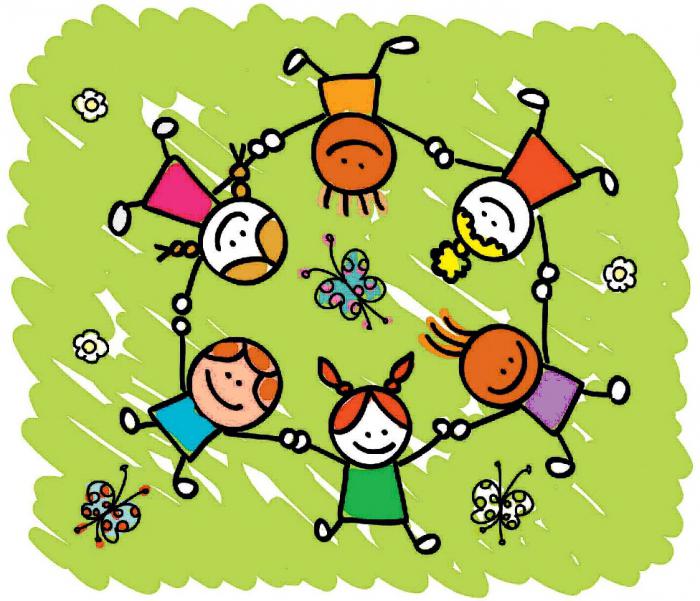
“Organization of educational activities during sensitive moments” methodological development
« Organization
educational activities during regime moments"
In the context of modernization of domestic education, Russian preschool educational institutions actively restructured their own work in accordance with the new regulatory document - the Federal State Educational Standard for Preschool Education (FSES).
Federal state requirements for the structure of the basic general educational program of preschool education guide teachers toward “solving program educational tasks in the joint activities of adults and children and independent activities of children, not only within the framework of direct educational activities, but also during routine moments in accordance with the specifics of preschool education.” At the same time, educational activities during restricted periods should not be considered as an addition to direct educational activities. In educational activities, during critical moments, the following tasks are solved:
formation of the general culture of preschool children (culture of behavior, communication, activity, nutrition, sleep, health, life safety, etc., development of their physical, intellectual, personal qualities and prerequisites for educational activities.
Health protection and formation of the basis of a health culture;
Formation in children of the foundations of the safety of their own life activities and the prerequisites for environmental consciousness (safety of the surrounding world)
Mastering initial ideas of a social nature and including children in the system of social relations
Formation of a positive attitude towards work in children.
Forms of conducting educational activities during the day:
Outdoor games with rules (including folk ones), game exercises, motor breaks, sports runs, competitions and holidays, physical education minutes;
Wellness and hardening procedures, health-saving activities, thematic conversations and stories, computer presentations, creative and research projects, exercises to master cultural and hygienic skills;
Analysis of problem situations, game situations to develop a safety culture, conversations, stories, practical exercises, walks along the ecological trail;
Game situations, games with rules (didactic), creative role-playing, theatrical, constructive;
Experiences and experiments, duty, work (within the framework of practice-oriented projects), collecting, modeling, dramatization games,
Conversations, speech situations, composing tales, retellings, guessing riddles, learning nursery rhymes, poems, songs, situational conversations;
Listening to the performance of musical works, musical-rhythmic movements, musical games and improvisations,
Children's art openings, fine art exhibitions, children's art workshops, etc.
This is daily work that is carried out throughout the entire time children are in kindergarten (in the morning and evening hours, during walks), regardless of the season, event, calendar of holidays and memorable dates. In addition, the complex thematic principle of constructing the educational process determines the need to solve educational problems related to the implementation of the topic in educational activities at critical moments.
MORNING is a calm, routine moment. The main task of pedagogical work in the morning is to include children in the general rhythm of life of the kindergarten, to create in them a cheerful, cheerful mood. It is very important to do emotionally stimulating gymnastics here. Work is carried out in subgroups and individually. If we talk about frontal work, it can be round dances and quiet activities. Morning reception is the most favorable time for individual communication between the teacher and each child. During these hours, individual work with children on various types of activities is successfully carried out. Its distinctive feature is ease, reliance on the child’s interest and curiosity, on the entertaining form and content of the activities. This is work on correcting and educating children in correct sound pronunciation, on developing oral speech and developing correct intonation, on physical education (stimulating motor activity). When planning individual work with children, the teacher specifically indicates the names of those pupils with whom the work will be done and prescribes what kind of work.
The content of the morning period of time includes: play activities, conversations with children,
examination of objects and illustrations, short observations in nature and phenomena of social life.
It is good to plan short conversations in the morning with a group of children or individual children on pre-planned topics and topics that arose on the initiative of the children. So, in the calendar plans of the junior and middle groups, the teacher schedules short conversations with children about close people and accessible objects and phenomena of the world around them: about mom, dad and grandmother, about younger brothers and sisters, about toys, books, natural objects and much more. Often such conversations are accompanied by viewing illustrations. In the calendar plans of the senior group, in addition to those indicated above, conversations are planned with and without looking at illustrations on more complex topics: about the seasons, about domestic and wild animals, about the life of their hometown.
When planning specific activities, it is important to consider the nature of the upcoming activities.
If the classes are of a calm nature, requiring mental activity and perseverance of children, such as classes on the formation of elementary mathematical concepts, learning a poem, retelling, children’s activities are planned for the morning, causing them to be physically active, and, conversely, if the classes involve greater mobility, children (physical education, music), then morning activities should be more relaxed.
Number of activities in the morning:
in junior and middle ages - 3-4 types,
in the senior preparatory group - 4-6 types depending on the children in the group.
The teacher himself determines how many types of activities there should be based on approximate canons.
In the morning period of time, you can plan all types of activities at the request of the children (games, communication, work, individual work, etc.), but they must meet the following requirements:
1. The activity should not be long (15-20 minutes), the child should see the result of his work. N: Role-playing and construction games are lengthy and are not planned in middle and senior groups.
2. It is not advisable to plan activities in the morning that require a lot of preparation.
3. You cannot plan activities in the morning that involve the use of piercing and cutting objects.
4. In the morning we plan only activities that are familiar to children.
5. Morning exercises are planned. The complex learned in physical education class changes after two weeks. Morning exercises are carried out daily.
When planning morning exercises, you need to pay attention to the correct spelling of planning. It can be written on a card, or it can be included in the plan. Regardless of this, the following structure must be followed when planning gymnastics:
Part 1 – introductory, in which various types of walking and running are performed,
Part 2 – medium, includes a set of general developmental exercises indicating I. p.,
Part 3 is the final one.
The dosage for performing all movements and exercises must be indicated.
Breathing exercises are performed 3 times a day. It is best to do it before meals, before bed, after sleep. Finger gymnastics is performed 2 times a day. It is better to do it during classes or in breaks between them. Visual gymnastics takes 3-5 minutes and is carried out in free time from classes, at least 2 times a day. Articulation gymnastics is best done individually or with a subgroup of children in the afternoon. Articulation gymnastics is carried out daily, starting with the younger group. Gymnastics after sleep is carried out daily in the afternoon for 5-7 minutes using breathing exercises that help normalize the activity of the cardiovascular system and train proper breathing skills.
There is also conjugate gymnastics - finger and tongue theater. Such gymnastics can be carried out starting from the middle group in the second half of the year, when the child has developed the skills of articulation and finger gymnastics. These exercises are performed at a fairly fast pace, in a cheerful mood and with a change of poses.
Brain gymnastics is aimed at coordinating movements in fine and gross motor skills, the left and right hemispheres. Cross movements are carried out, performed with both hands at once. Brain gymnastics is carried out starting from senior preschool age. The duration of the complex is 5-7 minutes.
Mode of motor and intellectual load, including safety measures
WALK. Goal: to provide highly active, meaningful, varied, interesting activities and relieve fatigue. The daily routine for each age group includes two walks: morning and evening (not counting the morning outdoor activities for children). There are four types of walk:
Typical: maximum free activity of children (maximum attributes).
Combined, consisting of two parts: the first part is a target walk; the second part is the free activity of children.
Walk-excursion, walk-hike.
Sports (competitions, relay races)
The goal of a walk in the first half of the day is to restore strength after exercise and get the maximum positive charge. A walk should provide relaxation to the child, relieve stress after classes and create a cheerful mood in him, which in turn provides the appropriate tone for the successful physical and mental development of the child in other conditions and types of activities.
When talking about planning a walk, you need to remember if it was preceded by a dynamic activity (musical, physical education, choreographic, etc.) and begins with an active or sports game, if there was a static activity before the walk. When planning the content of educational work during a walk, the teacher provides for a uniform alternation of calm and motor activities of children, the correct distribution of physical activity throughout the walk, adhering to the following approximate structure: calm, independent activity of children (games, observations); then outdoor games with elements of sports, sports entertainment; children's work activity.
The teacher should pay special attention to providing active, meaningful, varied and interesting activities for children: games, work, observations, during which a children's team is formed, positive behavior skills are acquired and cultivated, and children's ideas about the surrounding nature and social life are accumulated. Planning work on the development of movements during a walk should help consolidate, improve games and physical exercises, and increase the motor activity of children. It is important to choose the right time for games and exercises.
Organized motor activity should not be allowed to take place at the expense of children’s independent activity time. The duration of mobile activity is 60-70% of the total duration of the walk, and the independent activity of children should not be impaired.
Structure of the walk. The walk begins with observation. Let’s take a closer look at what you need to plan for the walk:
1. Observation (of weather, nature, transport, adult labor, seasonal changes in clothing, etc.). Observations of natural phenomena are carried out more often.
2. An outdoor game (plot-based “Geese-geese...”, plotless “Day-Night”, competitive game – “Who’s faster”), in which all children in the group take part. It is planned taking into account the weather and the characteristics of the season.
3. A sports game, exercise or elements of a sports game are planned in senior groups (badminton, basketball, football, hockey, small towns).
4. Didactic games, round dances, fun, creative.
5. Individual work on the development of movements, in preparation for classes (mathematics, speech development), with children who have not mastered the material (3 - 7 minutes), with gifted children, in preparation for the holidays.
6.Work in subgroups (at the request of the children - what they want to do). It is necessary to develop the need for work in children. It is not necessary to follow the sequence of actions during a walk; it all depends on the mood and desire of the children.
7. Conversations are planned on the culture of communication, on the education of moral qualities.
In the second half of the day, the content of the walk includes outdoor play, role-playing games for children, and work activities.
Observations. This type of children's activity during walks in the morning is planned daily. In older groups, where there is a particularly broad program of familiarization with social and everyday phenomena, you can plan two observations, one of which will be part of a comprehensive lesson and will take 10-15 minutes (for example, examining postage, school supplies, etc.).
Observations should be planned in accordance with weather conditions and time periods: winter, spring, summer, autumn. Observations can be planned both short-term and long-term. In the process of observations, carried out both on the initiative of adults and at the request of children, aesthetic perception, mental activity develop, interest in the environment and in cognitive activity is formed. Thus, in the process of observation, the child develops comprehensively.
Types of observations: Observations of the environment (inanimate objects). I would like to draw your attention to the instructions on protecting the life and health of children. With children under three years of age, for example, they do not watch the sky, since children have not yet fully developed a sense of balance.
Observations of wildlife (flowers, trees, shrubs).
Transport observations. In the junior and mid-middle groups, they monitor the transport on the territory of the kindergarten that arrives. Children approach the fence without leaving the institution. In the senior and preparatory groups, children are taken for a walk to observe transport. Here, in this type of observation, it is imperative to remember that deep work is underway to familiarize children with the rules of the road and behavior on the street.
Observations of a living object. It is necessary to pay attention to the basics of safety.
Observations of the work of adults. In early and middle age, the work of adults in a preschool institution is observed. First, they observe the adult’s work activity and the result of this activity. The next stage is to show how much the adult tries to work at his job. From the end of the middle group, children go on excursions (factories, factories).
When organizing any types of observations, artistic words should be used: poems, proverbs, sayings, riddles, nursery rhymes, signs. They begin to introduce signs to the middle group.
The program content of observations alternates rhythmically. Over the course of a month, four observations can be made approximately in the following sequence (preparatory group):
1st week - nature history excursion (target walk);
2nd week - observation of household objects;
3rd week - observation of natural history objects (in the group room);
Week 4 – observation of social phenomena and people’s work.
Outdoor games. An important place in the walk is occupied by outdoor games, in which all children in the group take part. To this end, the teacher arouses children's interest in the game and makes it exciting. Only the spontaneous active participation of children in the game creates a joyful mood in them and ensures its pedagogical effect. The number of outdoor games is from one to four. When selecting outdoor games, you need to pay attention to the type of basic movements. In the warm season, more outdoor games with throwing, crawling, and climbing should be given. In cold weather - with running, throwing, jumping. The game is organized and conducted by the teacher, who not only leads, but also participates in the game, taking on the most responsible role. The duration of one game is 7-15 minutes (depending on the age of the children and health status). It is important that all students in the group take part in outdoor games. For this purpose, only games familiar to children are planned during the walk. Children are introduced to new games during physical education classes.
In the selection of outdoor games and competition elements, it is necessary to take into account the individual characteristics of the physical development and health of children. Games, being a specific type of activity for a child, are widely used in physical therapy to solve set therapeutic problems.
If a physical education or music lesson was held in the first half of the day, then it is advisable to organize games and exercises in the middle or end of the walk, and at the very beginning to provide children with the opportunity to play independently and practice with a variety of aids.
On other days, it is advisable to organize the motor activity of children at the beginning of the walk, which will enrich the content of their independent activity.
On the days of physical education classes, one outdoor game and some physical exercise (sports exercise or exercise in the main type of movement) is organized with children. On other days, when the lesson is not held, an outdoor game, sports exercise and exercise in the main type of movement (jumping, climbing, throwing, throwing and catching a ball, etc.) are planned. During the walk, outdoor games and play exercises of varying degrees of intensity should be planned. During the month, 15-20 outdoor games (including relay games) can be played, while 3-4 new games are learned. Let me remind you that the total duration of the game is 7-10 minutes.
The health-improving effect of a walk largely depends on the properly organized motor activity of preschool children. When planning a walk, the teacher provides individual work with children on physical education. Individual physical education work should be planned daily and with those children who have problems mastering basic movements. Please note that there are children with varying degrees of mobility. Individual work can take place in an entertaining game form, sports games and entertainment.
For example, for the older group, sports exercises and elements of sports games are recommended: badminton, table tennis, basketball, football, hockey, gorodki.
Sport games. Sports games and exercises are carried out daily during walks or in the gym.
Basketball. Passing and throwing the ball to each other with both hands, throwing into the basket with both hands from behind the head. Mastering the game using simplified rules.
Football. Passing the ball to each other with hitting it with the right or left foot while standing still, tossing the ball with the foot, hitting the ball into objects, scoring into the goal. Mastering the game using simplified rules.
Hockey. Ability to skate, dribble the puck with a stick, pass the puck to each other, shoot the puck into the goal. Mastering the game using simplified rules.
Badminton. The ability to hold the racket correctly, hit the shuttlecock, and throw it to a partner without a net. Mastering the game using simplified rules.
Tennis. The ability to hold a racket, hit the ball, and throw it over the net. Mastering the game of table tennis and tennis using simplified rules.
Role-playing games. Role-playing games must correspond to the age, interests, level of development of children and take into account gender-role differentiation. They are based on the knowledge that children have. The topics should be very diverse. Games are held on everyday and industrial topics; games to reinforce traffic rules and rules of conduct on city streets; construction, theatrical; games whose themes are related to modern life.
Laying on asphalt, sand, snow from natural materials (sticks, pebbles, plastic plugs, autumn leaves, fruits and other materials). Buildings made from natural materials (anthill, broom made from blades of grass). Games with sand (sifting, Easter cakes, molds). Drawing with a stick, crayons on asphalt, sand, snow. Games with string.
Basic labor activity. It can be of two types:
Household work: children, together with a teacher and friends, clean up the area, play corners and lockers. Work in nature: children work in the flower garden, flower bed, vegetable garden.
Forms of organization of labor activity can be either frontal or subgroup.
When planning the volume and content of work activity, the teacher, along with teaching children some practical skills for working in nature, must provide for their acquaintance with plants, animals, the rules for caring for them, think over ways to organize children in this activity, the sequence of work, techniques that help develop their senses satisfaction from the work performed, responsibility for the common cause.
EVENING. Target. Create a joyful mood so that the next day the child will be happy to go to kindergarten. After a nap, it is good to plan the children’s work activities: cleaning the group room; repair of books, manuals, board games; washing doll linen, handkerchiefs, ribbons; Making homemade toys for your own games and for kids’ games. It is also recommended to organize various spectacular events and entertainment: puppet, table, shadow theaters; concerts; sports, musical and literary leisure activities in which children perform their favorite poems, songs and dances; new toys are brought in and played with; listening to audio cassettes and much more. Once a week (Thursday or Friday). Approximate names of the holidays: the holiday of “Soap bubbles”, “Balloons”, “Paper snowflakes”, “Thread (paper) dolls”, “Fluffies”, “Flying pigeons”, “Jumping frogs”, “Funny words”, etc.
During this period of time, work on the musical and aesthetic cycle, work on visual arts, and evening entertainment can be planned. To broaden the horizons of children, you can plan artistic reading with continuation, telling fairy tales, viewing reproductions of paintings by classics and modern artists
1. All types of games - board-printed, role-playing, construction, outdoor, didactic, educational, theatrical. The wishes and needs of children are taken into account.
2. Individual work on all types of activities. In terms of visual activities and construction before the lesson, the lesson is the result of the teacher’s work. Before the lesson, it is advisable to plan individual work with timid children who are “weak” in this type of activity, so that these children feel more confident during the lesson.
3. Reading fiction.
4. Working with parents.
5. Work on ZKR.
The content of evening walks should be planned taking into account all the children’s previous activities. Observations, games, labor, physical exercises and outdoor games are planned. However, it must be borne in mind that in the evening you should not play games of great mobility that excite the nervous system of children.
Sports and recreational holidays according to the “Health Improvement” program are held 2 times a year.
“Health Day” is held once a quarter.
“Health Week” is held once a quarter.
There are forms of work that can be scheduled both in the first half of the day and in the second.
Forms and methods of work on the basics of life safety. (We will save, help, show, teach): Familiarization with fiction (stories, poems, added poems, riddles, puns, songs). Literature is selected for children, in which they become familiar with the rules of life safety in an accessible form. Children are read fairy tales that contain at least one element of a gross violation of safety rules. Rhyming rules of safety behavior.
Examination of paintings, subject and subject pictures, albums, posters, illustrations, models, models. When looking at pictures, children should be given the opportunity to evaluate the action of the peer depicted in the picture; tell what they would do in this situation.
Excursions, targeted walks. Productive types of children's activities - making posters, layouts together with children. Conversations with children: on the prevention of false calls, discussion of dangerous situations (in older groups). Trainings (games). As a result of the activities, children learn to ask for help if necessary, call the necessary helpline by phone, and remember their home address.
Introducing children to fiction Reading fiction is one of the forms of joint partner activity between an adult and children, and this form cannot be continued by children independently and become their free activity, since most children do not know how to read fluently and depend on their partner. adult. This places a special responsibility on the teacher in terms of selecting literary texts for reading. Reading literary texts should be done daily in order to become a habit and create a ritual of group life. Time for reading should be defined in the daily routine. Reading time is approximately 15-20 minutes in the senior group and 20-25 minutes in the preparatory group. The teacher himself selects literary texts for children, determines the sequence of their reading, guided by the principle of alternation: large and small literary forms. Large works of fiction should be read several days in a row (from 2 to 10-12 days), since children should be able to “keep” the sequence of plot events. Every month the teacher reads 1-2 large works to the children. In the period between readings of two large works, short works are used (folklore and original fairy tales, poetry, realistic stories). The teacher can outline literary texts for long-term reading and their sequence 2-3 months in advance, taking into account the interests of the children in the group. Short works of fiction for short reading are selected for a week or a month. When selecting and planning a sequence of texts, the teacher is guided by current events (season, holidays, memorable dates), thematic cycles and the focus of the current interests of the children in the group. The list is adjusted by the teacher taking into account conflicts and collisions that arise in the group, the solution to which can be suggested by the book.
In the younger group, the teacher introduces children to folk songs, poems, folk tales, and fairy tales by foreign and domestic authors.
In the middle group, the teacher introduces children to fables, tales about animals that are carriers of certain qualities, songs and nursery rhymes, works about rules of behavior and culture of communication.
In the older group, the teacher introduces children to works that reflect the situational behavior of the child and show how to get out of a particular situation
Organization of work on theatrical activities: Theatrical activities are planned in the morning and evening hours at unregulated times and can be presented as part of a lesson on different types of activities and as a planned special lesson.
Types of theatrical activities: Watching puppet shows and talking about them. Dramatization games: with fingers, with bibabo dolls, improvisation. Preparation and performance of various fairy tales and dramatizations. Exercises to develop expressiveness of performance (verbal and non-verbal). Selected exercises in ethics. Exercises for children's social-emotional development. These types of theatrical games are successfully used in groups of different ages. Uniting children on artistic material, on joint positive emotions and common experiences helps to solve, in addition to common problems, also such as the ability of older children to keep the baby occupied, entertain him, and give him joy and pleasure. In a multi-age group that unites children with different developmental experiences, it is important to skillfully select works that can serve as material for joint dramatization games and that will be used only in subgroups.
Cognitive and speech development. Work on cognitive and speech development is aimed at activating speech, verbal communication, speech creativity, as well as consolidating and repeating speech program material, and should be based on interesting forms and methods of work. Conversations with children.
Folk games. Role-playing games. Sketches, improvisations. Observations, walks, excursions. Examination of drawings and photographs. Free and thematic drawing, modeling. Reading works of fiction. Teacher's stories and children's stories. Writing stories. Mini-competitions, competitive games.
How is the walk carried out?
Educational activities at preschool educational institutions are always included in the plans. When getting ready for a walk, children are clearly given instructions for further actions.
First, the group is put in order, and then the rules of behavior in the locker room are reminded.
Educational tasks are also solved in the process of dressing children. The teacher pronounces the name of the clothing, its parts, and its purpose. In this way, the vocabulary on the topic “Clothing” is replenished.
During the walk, the teacher organizes a variety of activities for children. They must first be familiarized with the available equipment and toys. It is also necessary to discuss the rules for handling them.
Regular moments stipulate that during a walk, children must be given time for joint free activities, but at the same time, the teacher must ensure that the children do not become overexcited during the interaction.
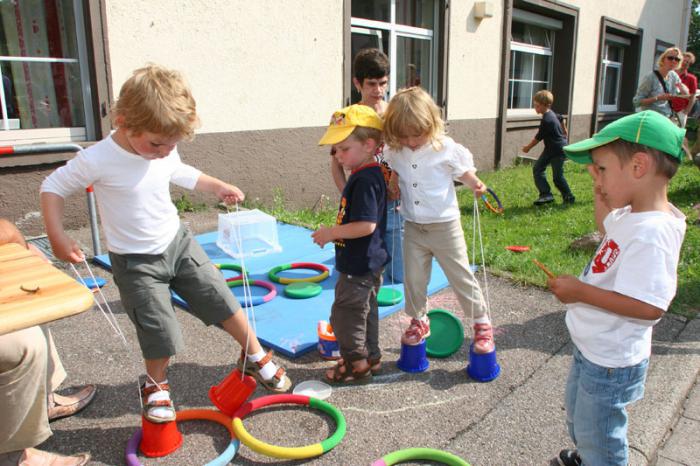
An outdoor game must be played. From time to time, the guys are involved in cleaning the site.
Half an hour before the end of the walk, the teacher needs to organize a calmer activity, for example, observe the phenomena happening around or talk about changes in nature.
Before returning to the group, children are told the rules of behavior in the locker room.
While changing clothes, the teacher is faced with the task of instilling in children a careful attitude towards clothing, showing how to put their things in lockers.
“Organization and planning of routine moments in kindergarten”
Consultation
on the topic of:
“Organization and planning of routine moments in kindergarten”
Prepared by:
teacher of 1st category
Volkova Olga Sergeevna.
Goal: To acquaint teachers (young specialists) with methodological recommendations for organizing and planning routine moments; their significance for the development of intellectual and physical qualities; prerequisites for educational activities, on the formation of a general culture and the development of personal qualities of a preschool child.
The solution to program educational problems is solved not only within the framework of direct activities, but also during routine moments.
Let's consider the need and possibility of organizing the life and activities of a child in a preschool institution from the perspective of modern value-target guidelines set by the Federal State Educational Standard for Education.
“formation of a common culture, development of physical, intellectual and personal qualities, formation of educational activities that ensure social success, preservation and strengthening of the health of preschool children”
I would like to dwell on the problem of forming a general culture and developing the personal qualities of a preschool child in the process of organizing routine moments.
The main components of general culture are:
- Culture of health (culture of nutrition, culture of sleep, culture of life safety);
- Social culture (culture of behavior and communication, culture of activity).
When planning routine moments, you should pay attention to:
- The organization of routine moments should be aimed at the formation of a general culture and the development of the child’s personal qualities.
- The organization of each of the routine moments should ensure the comprehensive development of the child.
- During the organization of regime moments, the unity of the objectives of the educational process of preschool children should be ensured.
- The organization of regime moments should “be built taking into account the principle of integration of educational areas in accordance with the age capabilities and characteristics of children, the specifics and capabilities of educational areas.”
In a preschool educational institution, the normative basis for organizing routine moments is the daily routine (which is approved by the head).
The daily routine provides for the organization of joint activities with the teacher and independent activities of children both during scheduled moments and between them.
Options for organizing various types of activities at various scheduled times are very diverse and depend on the age of the children, their interests, seasonality and events.
In the daily routine, we can highlight the following routine moments:
- Reception of children, examination, games, morning exercises
- Preparation for breakfast, breakfast
- Games and children's activities
- GCD
- Preparing for a walk, walk
- Returning from a walk, preparing for lunch and lunch
- Getting ready for bed, naps
- Getting up after sleep, water procedures, hardening activities
- Games, independent activities for children
- Dinner
11. Walk, go home
In each of the listed routine moments (except for the morning reception and going home) there is always a preparatory and final stage (preparation for breakfast, breakfast, completion of breakfast).
Each regime moment may include the following organizational aspects (structural components):
- Preparing for a routine moment (for a walk, for eating, etc.)
- The routine moment itself (walking, eating, sleeping)
- Completion of a routine moment (return from a walk, gradual ascent, etc.)
You should not forget about other forms of work when organizing routine moments:
- Duty;
- Interaction with parents;
- Meeting of children;
- Inspection;
- Etc.
Reception of children, examination, games, morning exercises
Reception of children by a teacher can be carried out in a group, reception room or at the site. The most important thing is to create a good mood for both the child and his parents. This provides a positive attitude for the coming day and is the key to mutual understanding and interaction between the kindergarten and the student’s family.
During the morning reception, it is necessary to pay attention to the appearance of the children. Of course, the children who come should greet the teacher and other children in the group, join in the games, talk quietly, and not shout.
The teacher provides interesting, meaningful activities for children and makes sure that they do not quarrel or interfere with each other. If a child is shy, self-conscious, not in the mood, or for some other reason cannot independently choose an activity, the teacher should help him: connect him to playing children, help in choosing toys, play with the child, or give him some specific activity. order.
The teacher also provides conditions for varied and interesting independent activities of children in a group or in the area. To do this, he systematically changes the interior of the group room, introduces new (or already forgotten) aids that will contribute to the emergence of playful or creative ideas in children.
In the morning, the teacher conducts gymnastics with the children. At the same time, the teacher works together with the children and, if necessary, corrects and corrects the children’s exercises.
Preparation for breakfast, breakfast
The organization of washing is carried out gradually, in small groups of children. Children should be reminded of the rules of behavior in the washroom - children should not splash water, should maintain order and cleanliness, immediately turn off the water after washing their hands and under no circumstances leave the taps open. It is also necessary to pay attention to the actions of children - they must roll up their sleeves, soap their hands and perform other procedures at the sink. Children should know that they can only use their own towel, and after washing they need to carefully hang it in its place. These procedures should be carried out in a calm, friendly environment, which will ensure a good mood for children during meals.
When organizing breakfast, the teacher draws the children’s attention to how the tables are set for breakfast and evaluates the children on duty. Depending on the menu, you can clarify the names of some dishes. It is important to note the care of nannies and cooks for children, and to outline in a few words the importance and necessity of these professions.
During the meal, the teacher constantly monitors the children’s posture and motivates them to eat all the food offered. However, if the child has no appetite and refuses to eat, then it is better not to force it. Forced eating will not do anything good for either the physical or psychological health of the child. Also, during the breakfast process, the tasks of developing cultural and hygienic eating habits are solved.
Games and children's activities
In the group, the teacher creates conditions for children to organize different types of activities, and the plan reflects for which types of activities the subject-development environment has been created - indicating the name and purpose of the activity. When working individually with children, it is necessary to indicate both the topic and the goal, with clarifying details.
Direct educational activities
Direct educational activities should flow organically from the types of activities that children were engaged in at the previous stage. GCD is carried out according to the calendar plan, which indicates the program content and goals.
Preparing for a walk, walk
Before going for a walk, it is necessary to restore order in the group: collect toys and place them in their places, remove manuals and materials that were used in direct educational activities.
Before getting dressed, the teacher reminds children of the rules of conduct in the dressing room. In this regime moment, the teacher develops in children the skills of dressing and the culture of behavior when dressing, solves a wide range of educational tasks: the name of clothing and its purpose, the name of the details of clothing and the activation of the dictionary on the topic “Clothing”. The teacher draws the children’s attention to the sequence of dressing, and before going out for a walk, to the children’s appearance. If during the process of dressing someone makes obvious mistakes, the teacher eliminates them together with other children in the group, while making the children want to help each other and stopping ridicule from their peers.
Organization of a walk
.
During the walk, the teacher helps children organize interesting and varied activities. To do this, there must be toys and auxiliary equipment, the rules for handling which the teacher teaches children during a walk or previously in a group. During the walk, the teacher has the opportunity to observe the content of the games and the children’s relationships and adjust them if necessary.
Before leaving the walk, the children tidy up the area and collect the materials they take away. Before entering the kindergarten, the children wipe their feet and learn to enter calmly, without jostling, arguing, or interfering with each other. In the locker room, the teacher monitors the process of changing clothes and instills in children a careful attitude towards things and neatness skills.
Returning from a walk, preparing for lunch and lunch
See Preparing for Breakfast, Breakfast.
Preparing for bed, naps
IMPORTANT! After lunch, under no circumstances should you immediately put your children to bed. After eating, at least 20 minutes should pass.
It is better that the period of preparation for bed be calm and balanced. Children are not recommended to be distracted by noisy games or emotional conversations. When undressing, the teacher develops a caring attitude towards things and neatness. The bedroom environment should be calm and relaxing. A gentle lullaby, folk nursery rhymes and sayings will help create the right mood and a positive attitude towards daytime sleep. It is necessary to check whether the children are comfortable in their beds, or even better, approach each one, straighten the blanket, pat them on the head and wish them a restful sleep. This way you will show your child your love and care, and create a peaceful mood that promotes good sleep.
Getting up after sleep, water treatments, hardening activities.
The rise is carried out gradually, as the children wake up; after the rise, hardening procedures are organized, the implementation of which is coordinated by the teacher with the nurse and the parents of the pupils.
After sleep, children consolidate their independent dressing skills, and the teacher helps them if necessary. Work continues to cultivate accuracy and independence.
Games, independent activities for children
It is organized similarly to the item “Games and children's activities”.
Preparing for afternoon tea, afternoon tea
It is organized similarly to the item “Preparing for breakfast, breakfast.”
Games, walks, children going home
It is organized similarly to the points “Preparing for a walk”, “Games” and “Reception of children”.
During an evening walk and in the presence of the child, the teacher can inform parents about his developmental achievements and successes in the group. For clarity, it would be nice to demonstrate the children's work. In addition, the teacher informs parents about the problems the child has encountered and ways to solve them, and provides advice on issues of interest to parents.
IMPORTANT! The order is exactly this: first positive, then negative. Whatever the child is, no matter how much inconvenience he causes you, you must definitely find the positive and praise him in the presence of his parents. And only then about the problems. Tactfully, unobtrusively, competently, but persistently. And an individual approach to each family is required: to whom, how and what can be said and what cannot be said.
Separately, it is worth paying attention to the departure of a child from kindergarten. The child must not forget about the rules of good manners, namely, say goodbye to the teacher and the children of the group. The teacher and parents need to form a positive attitude of the child towards kindergarten and prepare the children for the next visits.
Preparing for quiet time and getting up
Lunch is about the same as breakfast. Here, too, duty officers are appointed and given feasible tasks.
Regular moments are also observed after meals, when preparation for bed begins. To do this, the teacher must strictly monitor discipline in the group so that the children do not play out and make noise, creating a mood for relaxation. The environment should be calm so that the guys can relax.
In the process of preparing for bed, the teacher is faced with the task of continuing to instill in children a caring attitude towards things and encouraging positive emotions regarding daytime rest.
During the rise, children should not be distracted by extraneous things, but immediately get dressed and then wait for the others. At this time, you can offer your child a quiet game, for example, putting together a simple puzzle.
Developmental activities for children
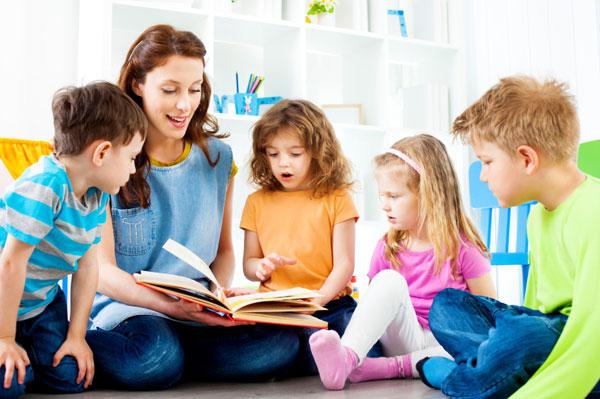
Regular moments in the garden necessarily include developmental classes in mathematics, speech development, drawing, modeling, physical education, music, consolidation of everyday skills, and others.
Most often, classes last no more than half an hour, because children at that age are not yet able to maintain attention for a long time, which is why they need a constant change of activity.
Naturally, the duration of classes in the nursery group differs from that in the preparatory group.
MAGAZINE Preschooler.RF
Pedagogical Council “Planning and organization of educational activities during sensitive moments”“Organization of educational activities during sensitive moments: modern approaches”
Federal State Educational Standards for Preschool Education guide teachers toward “solving program educational problems in the joint activities of adults and children and independent activities of children, not only within the framework of direct educational activities, but also during routine moments in accordance with the specifics of preschool education”
Specifics of the modern approach to organizing educational activities during sensitive moments
consists of an emphasis on organizing joint activities of adults and children to solve educational problems.
The essence of education from the point of view of the activity approach is that the focus is not just on activity, but on the joint activity of children and adults to implement jointly developed goals and objectives.
Also L.S. Vygotsky noted that a child’s learning can occur spontaneously or purposefully, but always in collaboration (overt or hidden) with another person, an adult or a peer.
Joint activities have the following characteristic features. 1. The presence of a common goal, a common motivation to achieve it. 2. The presence of direct personal contacts between participants, including the exchange of actions and information. 3. Dividing the process of joint activity between participants depending on the capabilities of each. 4. Achieving a common result that is significant for everyone, which is extremely important for preschoolers.
In joint activities, participants acquire new knowledge from each other, experiencing this process as their own discovery of something previously unknown.
The meaning of joint activity is precisely that the teacher does not pass on ready-made models of actions, behavior, moral and spiritual culture to children, but creates and develops them together with the students.
The content of the educational process, implemented in the context of the activity approach, is a joint search for new knowledge, life norms and values in the process of active activity of each participant.
The specificity of the modern approach to organizing educational activities in sensitive moments is to strengthen the role of children’s independent activities in solving educational activities.
Using the full educational potential of regime moments is possible only with the correct organization of both joint activities with adults and independent activities of children, which will preserve the specifics of preschool education and the intrinsic value of preschool childhood.
| Next > |
Summarizing
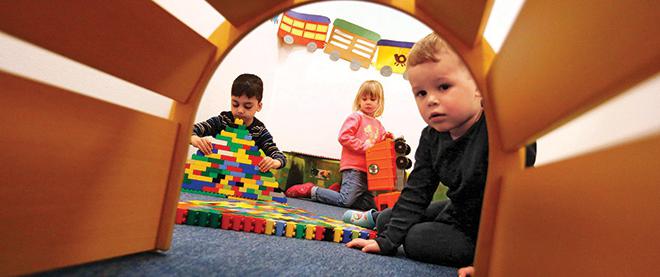
Analyzing the regime moments in kindergarten, you can notice that some points remain unchanged for all age groups. These include:
- Morning reception of children.
- Eating.
- Developmental activities.
- Game activity.
- Walk.
However, preschool leaders try to develop a daily routine in such a way as to take into account the age characteristics of children in each group.


